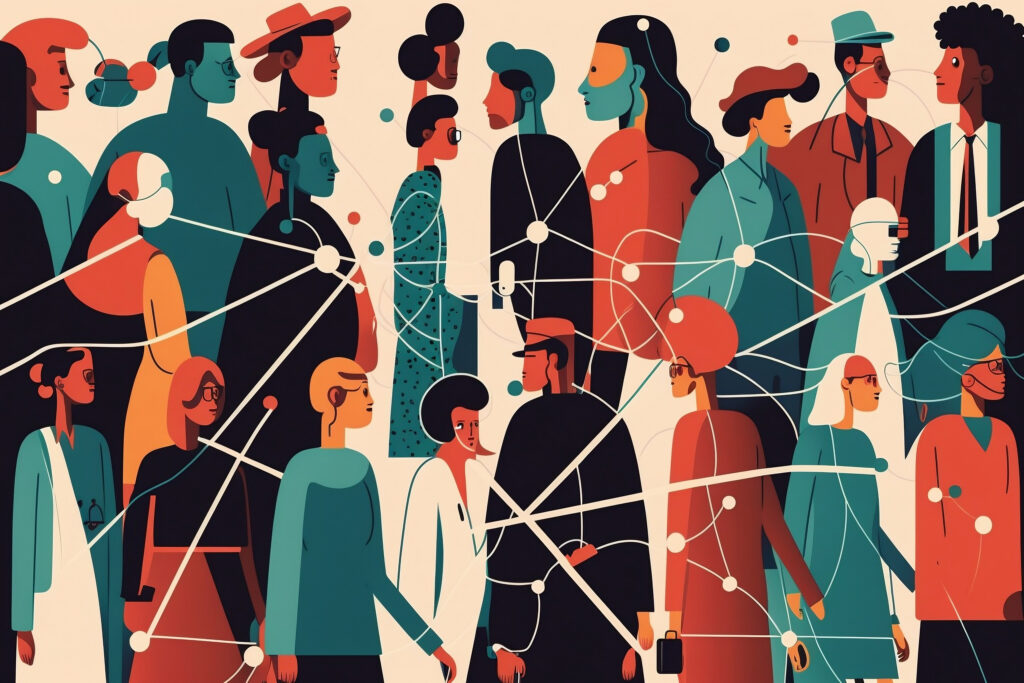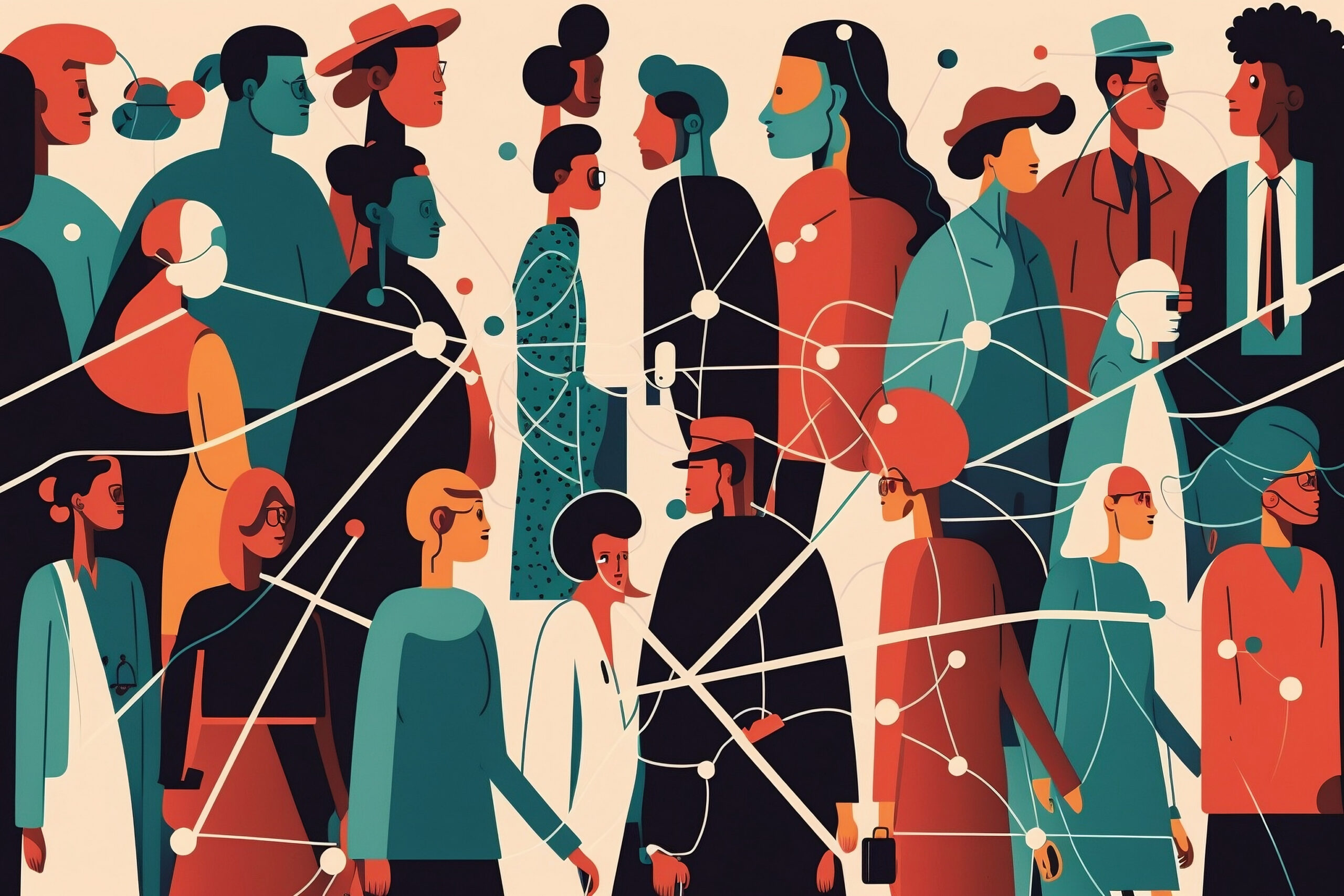The Shadow of Outdated Survival Attachment
Modern secure attachment and the current definition of interdependence acknowledges that humans are hardwired for connection and that social bonds are “as critical to our health as diet or exercise” ^1. It accepts connection is based on continual and often consistent mutual emotional support; it views the capacity to lean on others for emotional support as a strength.
It accepts co-regulation as an acceptable and necessary part of relating. It sees securely attached adults as ok by themselves, or with others, implying self-regulation and, as such, not having an overt dependency on co-regulation, but the ability to depend on others when needed, in the knowledge their needs will be met. It does not imply co-regulation as a primary or default mode of stress management. Communication, empathy, and mutual support are viewed as inherently good and necessary for healthy connection.
Trust is a requisite for secure relating, built through consistent and reliable responsiveness from others. It’s seen as foundational for healthy vulnerability and mutual sharing.
Both secure attachment and ‘healthy’ interdependency aim for authentic, functional relationships, and typically attributes performative, dependent, and illusional relating to insecure attachment styles. If a secure person becomes inconsistently dependable emotionally, they might be labeled avoidant or emotionally unavailable, implying a requirement for consistent availability for the connection to be ‘healthy’.
The Romanticised Currency of Interdependency
“Interdependence in psychology refers to the mutual reliance between two or more groups or individuals. This concept underscores the extent to which beings depend on one another for emotional, physical, and cognitive support.”^2
While this sounds harmless, Integrated Attachment proposes that this definition, when applied to adult intimate relationships, can perpetuate a problematic symbiotic dependency. This is seen as an outdated survival strategy that, through societal ‘Chinese whispers’ and the bastardisation of its meaning, has been romanticised and normalised, even within concepts like secure attachment.
This normalisation of dependency, even as a ‘secure’ baseline, is not supported within the Integrated Attachment framework, as it implicitly suggests dependency is normative and, scarily, healthy. This, in turn, has the potential to prevent individuals from truly and fully stepping into emotional autonomy, by keeping them subtly tied to the external sourcing of one’s perceived safety.

Integrated Attachment: A Transocial Relational Attachment to Self
Integrated Attachment distinguishes between the biological importance for physical survival through dependence as infants and an adult emotional need for connection. While, on the surface, mutual emotional support is beneficial, it asserts that anything that derives from need, entitlement, or expectation, comes from a problematic dependency. For the self-led individual, connection is driven purely by want and a desire to share from a space of fullness in Self, not by a fundamental need for emotional survival. We are ok with, or without connection. There is no need. No dependency for it for us to emotionally survive.
It rejects the dependency, expectation or entitlement of co-regulation or support. While acknowledging that support may be needed in times of low resilience, it firmly places it as a second line defence and is seen as an optional choice of the person offering support. This distinction is crucial: these elements become problematic when depended on for an individuals ‘safety’. Integrated Attachment views co-regulation and support from others as a gift, not an entitlement, and not the basis for what is deemed as a ‘healthy’ connection.
Integrated Attachment, through the Transocial lens, challenges the implicit outsourcing nature of trust. If one’s fundamental sense of safety or internal stability hinges primarily on trusting another’s consistent behaviour or emotional availability, then this subtly reveals a lingering dependency—though psychology often romanticise this as interdependence. Integrated Attachment demands an even more radical internal sourcing of safety, making external trust a ‘muted note’, rather than a prerequisite for one’s own foundational security.
It actively unmasks and rejects any form of performative, dependent, and illusional (and sometimes delusional) relating. The availability of someone to be there for another, emotionally or otherwise, is that person’s choice. If a person’s chosen non-availability, even if momentary, compromises another’s well-being, it highlights a hidden, dependent nature of modern ‘secure’ attachment. Integrated Attachment accepts potential loneliness rather than compromising one’s integrity and authenticity to expectedly see to the needs of others.
Integrated Attachment In Situ – A Human Interlude
I came to the relationship thriving because I was single at the time I met an ex-partner. Things started out beautifully but didn’t take long before the cracks in my emotional resilience began to show. I would struggle from any sign my hyper-vigilance picked up on and would lean toward her for comfort. During the moments she chose to say no, deciding to see to her own needs first, I labelled her as selfish and uncaring, often growing resentful and shutting down. Her heartfelt explanations did not matter. She was my partner. Caring for me was part of her role; the scales of emotional availability were not even. Because my needs were not met I ended the relationship.
Reflecting back, I can see she was acting from a space of Integrated Attachment. Her needs were most important and she honoured that. She loved me but also loved herself enough to honour her integrity and autonomy. She had a strength and energy that was enviable. It wasn’t that she was unable or unwilling to support me when I needed it, it was more that she wasn’t prepared to make herself suffer in the process. And I now fully respect that.
The Evolutionary Context: From Necessity to Choice
The research on human cooperation highlights that our ancestors’ “obligate collaborative foraging” made them “interdependent with one another” ^3. “Collaborating with others was necessary for survival and procreation” ^4. However, modern humans no longer rely on these methods for physical survival (e.g., “projectile weapons that enable individuals to be successful where previously only small groups… could attain foraging success” ^5).
This evolutionary shift means that what was once necessary for physical survival has now, in modern contexts, transformed into a conscious choice for connection. The pervasive patterns of emotional dependency can be seen as an extended shadow of early biological necessity; a habituated emotional comfort that prevents us from realising our full capacity for self-governance.
Conclusion: A Post-Secure Attachment Philosophy
While we don’t claim traditional secure attachment to be inherently flawed in its purest definition, Integrated Attachment identifies critical areas where its cultural application and subtle (mis)interpretations promote unexamined dependencies.
Integrated Attachment incorporates secure attachment’s baseline capacity for self-regulation and supporting oneself. However, it builds a new framework for relational integrity that actively and explicitly challenges the subtle, culturally ingrained dependencies that can persist even within seemingly ‘secure’ dynamics. It advocates for a radical authenticity and autonomy where connection is a desired, shared experience from abundance, rather than an entitlement or a means to emotionally survive.
Footnotes
[^1]: herrmann-et-al-2015-two-key-steps-in-the-evolution-of-human-cooperation-the-interdependence-hypothesis (Page 2)
[^2]: Zimbardo.com, Psychology Definitions: Interdependence: Psychology Definition, History & Examples
[^3]: herrmann-et-al-2015-two-key-steps-in-the-evolution-of-human-cooperation-the-interdependence-hypothesis (Page 1)
[^4]: herrmann-et-al-2015-two-key-steps-in-the-evolution-of-human-cooperation-the-interdependence-hypothesis (Page 2)
[^5]: herrmann-et-al-2015-two-key-steps-in-the-evolution-of-human-cooperation-the-interdependence-hypothesis (Page 4)


